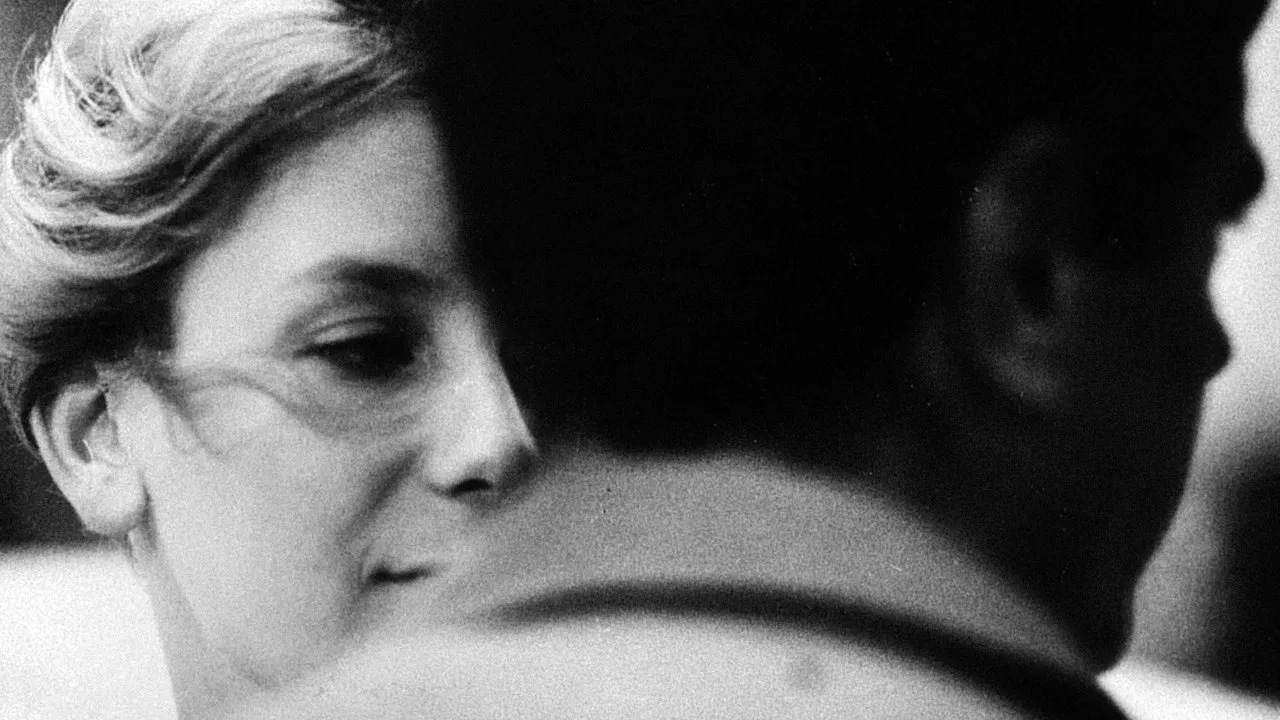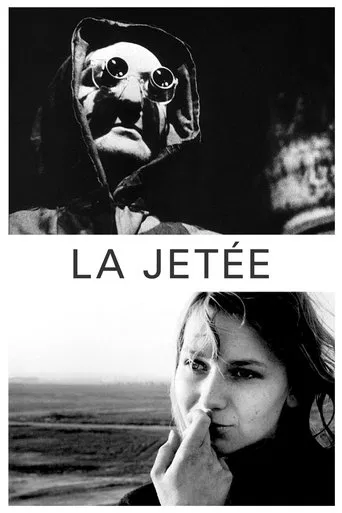

Legendary documentary filmmaker Chris Marker's most famous and praised work is not a documentary in the slightest; instead, it is "La Jetee", a powerful philosophical sci-fi drama clocking in at just 28 minutes and composed almost entirely of still photographs. Featuring mind bending concepts, tragic outcomes, iconic visuals, and a thought provoking narration, these photographs come together to create an experience comprised of melancholic beauty. Tears flowing down your cheeks, a chill creeping up your spine; get used to these feeling while watching "La Jetee" because you may start to feel them a lot!While engaged in this brilliant avant garde experience, the audience is cast away into a post apocalypse made up of depression, confusion, curiosity, and advanced experimental technology. This film presents a quest made up of romance, drama, and futuristic tech, but it contains NONE of the cliché traits one could expect from said genres. Instead, it is an atmospheric mood piece that lights up the screen with its originality and original style. It is all the better for its radical experimentation of the cinematic platform, twisting of audience expectation, and subversion of genre tropes. I hesitate to even label this as merely a science fiction film or a drama or a love story, because it really is not a film that wants to be categorized; instead, it wants to be explored and absorbed. This film is not some cool, futuristic sci-fi flick, instead it is a work of poetry, philosophy, feeling, sensuality, tragedy, and mystery. It is a cold, dense, and jaw dropping work of unstoppable genius.
... View MoreMany movies today are designed for lazy viewers, with the director showing us everything he wants us to see and trying to communicate his own vision. La Jetée isn't like that. In fact, it can hardly be called a "movie" since Marker composed it almost entirely of still images rather than moving footage. Marker uses vivid imagery and innovative presentation to etch a story definitively in each viewer's mind. The viewer is forced to fill in the gaps between the photos on his own, to build a story in his own mind, working off the many associations the images call up in his memory. As a result, the film feels interactive and personal. Furthermore, the film is resonant. Whereas many movies leave only vague memories of a plot in their wake, this one lingers in the mind with so many distinctive images: the woman's face, the man in the glasses, the eerie moment when the woman blinks as she lies back in bed. The moment when the protagonist regards his sleepy lover as she blinks, the only moving footage shown in the whole film, is one of Marker's most clever moments in the film, feeling more vivid than any other. Every other plot point — the time travel, the experiments, the scene on the dock — seems hazy and half-forgotten, like a dream. But this moment, with this woman, seems real. The film involves time-travel, but there are no blinky spaceships to be found, and it doesn't feel like dated sci-fi at all. (Well, aside from the eyeliner.) Time-travel plays a marginal role and is used only to illustrate the film's true concerns: memory, loss, and humans' need to dream. The protagonist is sent back in time by his cruel post-apocalyptic government to recreate the past, to weaponize it. Our pilgrim's mind is able to withstand all this without snapping because it has an anchor, in the form of a woman's face, glimpsed years ago from afar and never forgotten. Nothing ever came of this glimpse, but he cherished that one hope in his heart and built his whole being around her image. People's minds are irrational that way, and Marker knows it. His gap-riddled narrative and ambiguous ending play with the audience's irrational minds and force them to feel, well, something.
... View MoreLa Jetee is the best kind of film, the kind that makes you remember why you fell in love with movies in the first place. Hauntingly beautiful, eerie beyond belief yet sincere and fragile, every scene is a masterpiece. The sequence when the woman is in bed and her eyes blink is one of my personal favorites. Between the music and the daylight scenes at the museum when you are taken out of the experimenter's room, it is easy to forget this movie is post-apocalyptic. There is nothing I find scary, in part because it is so well crafted and has to be the most meticulous 27 minutes ever put on film. Chris Marker may not be well known but La Jetee will always deserve a spot among the best in cinema.
... View MoreStraight out of the twilight zone era of the early-'60s when the world came it closest (many times, as it turns out) to apocalyptic destruction, and so many Hollywood thrillers -- both highbrow and down-market -- enjoyed a mournful creepiness that just worked, came this French short, only 28 minutes long, about a post-WW3 earth in which scientific experiments underneath the catacombs of Paris are being conducted into human memory in order to access it in some way to achieve contact of a kind with the future.Comprised only of frozen freeze frames -- except for one brief, subtle yet heart-stopping moment -- LA JETEE offers up some of the most haunting cinema ever captured. With the museum sequence its timeless centerpiece.The music score, the imagery, the face of eternity that was the '60s.It must be said, however, that the original version of LA JETEE with french narration (and English subtitles) is the way to go. In recent years, however, a new version with English narration has circulated -- the problem being that the new narration is done very poorly, taking the picture out of the correct place and time somehow... This new version was probably done to make the film "more accessible" but does so to obtain a mainstream audience LA JETEE is never going to get anyway.LA JETEE is a classic must-see....But, as is the case with anything -- or anyone -- who is truly special, the regiment out their who hate it are deeply committed to their hatred of it. And such is the case with LA JETEE.
... View More